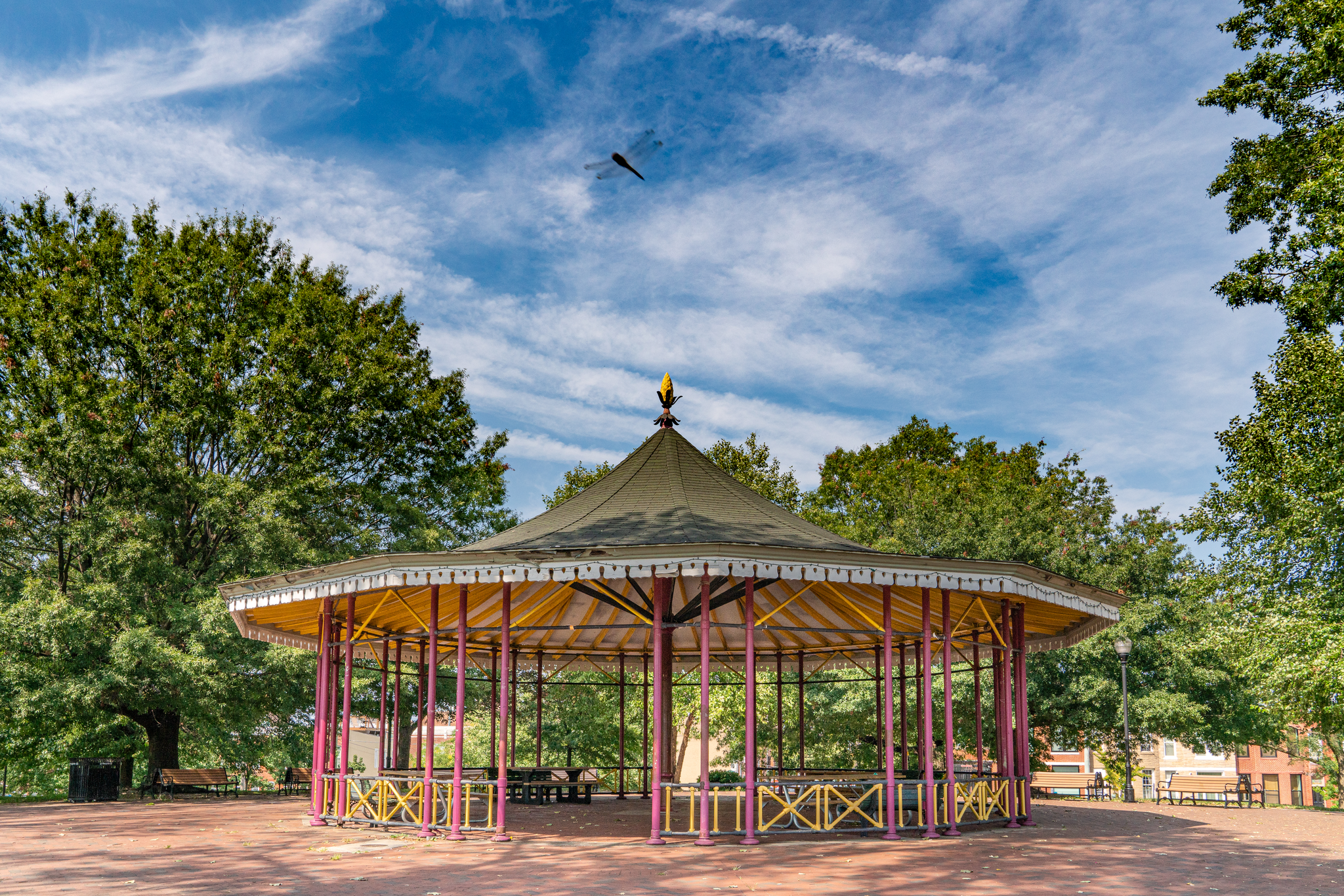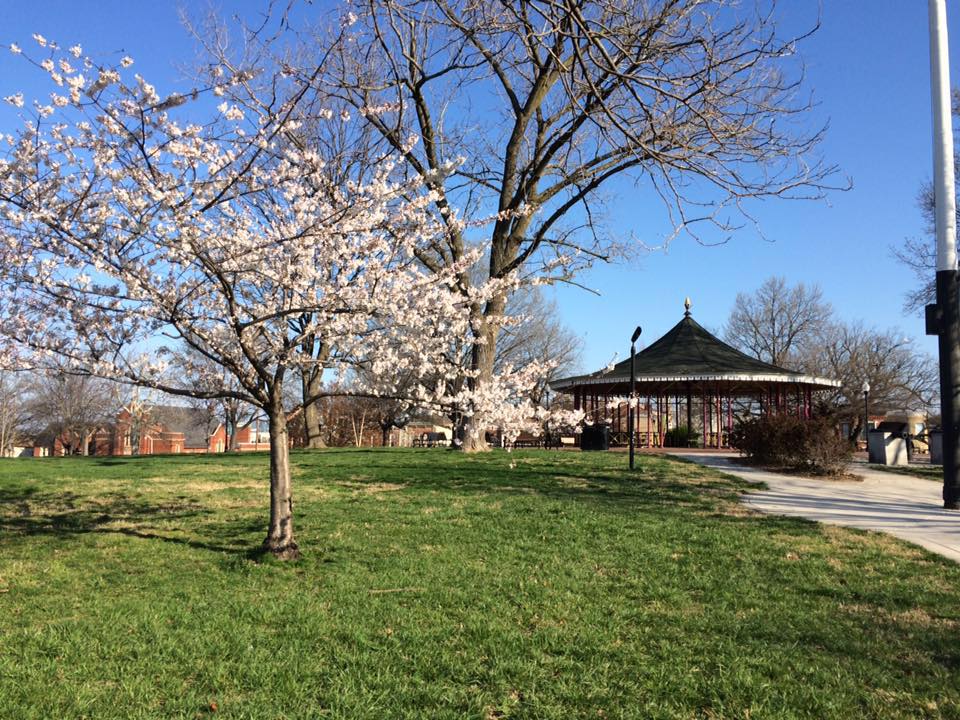
Early in Baltimore’s history, the site of Riverside Park was used as a lookout point because of its clear panoramic view of the South Baltimore peninsula and Patapsco River. During the War of 1812, Major General Samuel Smith ordered Captain Samuel Babcock to build a circular battery here called Fort Lookout. Commanded by Lt. George Budd during the Battle of Baltimore, the battery played a key role in the defense of the city on the night of September 13 into the early morning of September 14, 1814. Combined with the garrisons at Forts Covington and Babcock, the forces at Fort Lookout assisted in repelling a British assault on the peninsula by land, saving the city. After the battle, the fort was renamed Fort Wood in honor of Captain Eleazer Wood and the site remained in limited use through the mid 1800s.
In 1854, Baltimore approved for public use three acres of the old fort along Randall, Covington, and Heath Streets, renaming the property Battery Square. The city formally purchased the three-acre square in 1862 from James Polk. The city acquired an additional 14 acres to the south of Battery Square in 1873 and renamed the property Riverside Park, making it one of the city’s earliest parks. In 1876, the city passed an ordinance putting the park under control of the Public Parks Commission.
During the Baltimore Railroad Riots of 1877, the park served as an encampment for the Maryland 5th Regiment, where they helped guard the South Baltimore rail lines after assisting with the riots downtown. On August 1, the Maryland 5th put on an exhibition for local residents.

In the following years, the Public Parks Commission made several improvements to the park, including a large marble fountain in the center, a nursery, and installation of iron railings and gas lighting. In the late 1800s, Riverside Park was a popular gathering place, where it was not unknown for thousands to visit in one day. Later, throughout the 20th century a pool, playgrounds, sports fields and courts were added. Concerts and events at the gazebo provided a welcome distraction for the immigrant community that sprouted around the park and continue to be a popular attraction for the local citizens.
In October 1976, the park was renamed Leone-Riverside Park in memory of Councilman Dominic Leone, Jr. From 2009-2012 the park underwent major updates. These included: new concrete sidewalks replacing older cracked walkways, custom brickwork at selected park entrances, new benches and trees throughout the park.
To coincide with the 200th anniversary of the War of 1812, the National Park Service designated Leone-Riverside Park as a Star-Spangled Banner Trail site. To learn more about the War of 1812 and the Star-Spangled Banner National Historic Trail, visit www.nps.gov/stsp or www.starspangledtrail.net.
In late 2024, 13 of 15 City Council members co-sponsored a bill to rename Riverside Park Pool to the “Congressman Elijah E. Cummings Community Pool.”
Elijah E. Cummings, the longtime United States Representative for much of Baltimore City, grew up in the nearby South Baltimore neighborhood of Sharp-Leadenhall. As a child, Cummings would join other youths playing in the wading pool at the Sharp Street Community Center. The small pool was not sufficient for the community it was serving. One day in 1962 the center’s recreation leader, Jim Smith, gathered up some two dozen Black youth including Cummings and walked down to Riverside Park Pool. In the wake of 1954’s Brown v. Board of Education, both Maryland Governor Theodore McKeldin and Baltimore City Mayor Tommy D’Alesandro issued executive orders integrating public facilities, but in practice, the Riverside Park Pool was whites only. As the Sharp Street swimmers used Riverside Park’s pool over several days, as many as 1,000 white protestors flooded the area, hurling insults, rocks, and bottles. One of those bottles hit the young Elijah, resulting in a scar he would carry with him for the rest of his life. Other Black youth were also injured during these visits, as was Juanita Jackson Mitchell, a lawyer with the NAACP who was the first Black woman to practice law in the state of Maryland. Mitchell and the NAACP sought a blue ribbon commission to investigate the series of incidents, which was refused by then Governor John Millard Tawes.
In honor of the dedicated service of Cummings, as well as his, Mitchell’s, and the other community members’ participation in the integration of the Riverside Park Pool, the renaming of the pool recognized the event as part of the larger Civil Rights Movement and its longtime champion Elijah E. Cummings as essential elements of Baltimore’s place in that movement.

